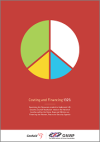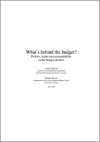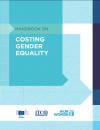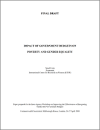FOUND 17
Examining the resources needed to implement Security Council Resolution 1325 at national level as well as the gains, gaps and glitches of financing the women peace and security agenda. Over the last decade the policy environment on women, peace and security has gained significant momentum.
Paper discussing the definition and measurement of Sustainable Development Goal (SDG) Indicator 5.c.1. (reclassified to Tier II) and comparing Indicator 5.c.1 with other SDG fiscal indicators.
Using country-level data, the paper estimates the costs of interventions aimed at promoting gender equality and women's empowerment in Bangladesh, Cambodia, Ghana, Tanzania, and Uganda. It then uses these estimates to calculate the costs of such interventions in other low-income countries.
The Handbook is a comprehensive, step-by-step guide to costing gender equality priorities.
The Global Programme Increasing Accountability in Financing for Gender Equality’ was developed to increase financing for national gender equality commitments in sixteen countries and to strengthen government and donor accountability on financing decisions and practices.
This reference tool handbook, available in English, French and Arabic, is the sixth in a series produced by the Inter-Parliamentary Union (IPU) which seeks to advance parliament's own capacity to make a positive impact on the budget, and to equip parliament, its members and parliamentary staff
This reference tool handbook, available in English, French and Arabic, is the sixth in a series produced by the Inter-Parliamentary Union (IPU) which seeks to advance parliament's own capacity to make a positive impact on the budget, and to equip parliament, its members and parliamentary staff
Since the start of the COVID-19 pandemic, almost USD 16 trillion has been pumped into the global economy, and governments are now rolling out second and third ph
This paper provides guidance on how to make Public Finance Management (PFM) reforms gender responsive. It presents an overview of PFM reforms and explains how and why they are important to the achievement of gender equality outcomes.
In this paper, Simel Esim (2000) focuses on expenditure and revenue instruments of fiscal policy as strategic entry points for engendering macroeconomics. The paper also includes a discussion of the potential implications of monetary policy and overall fiscal stance on poverty and gender equality.






